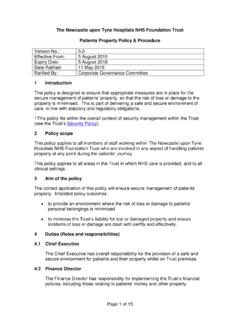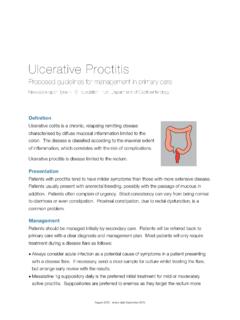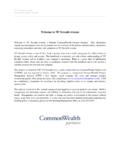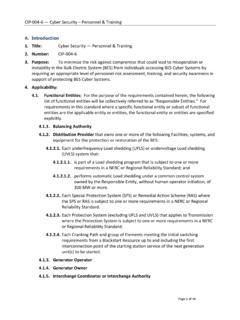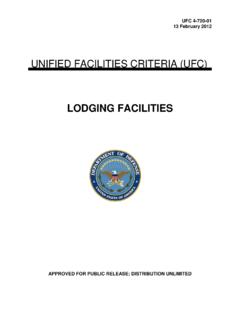Transcription of Policy for the prevention and management of …
1 Page 1 of 22 The Newcastle upon Tyne Hospitals NHS Foundation Trust Policy for the prevention and management of needlestick Injuries and Blood Borne Virus Exposures Version No : Effective from 5 August 2015 Expiry Date: 5 August 2017 Date Ratified: 2 June 2015 Ratified by: H&S Committee OHS and ID 1 Introduction All healthcare workers potentially are at risk from exposure to blood and/or body fluids. Whilst it is accepted that not all blood or body fluids are potentially infective, it is recommended that safer sharps device/needle free device and IPC Standard Precautions be adopted whenever there is the potential for exposure to reduce the risk of transmission of blood-borne viruses.
2 Exposure to blood or other potentially infectious body fluids may result in the transmission of blood-borne viruses (BBVs) including HIV, hepatitis B virus (HBV) and hepatitis C virus (HCV). Advice about other possible occupational risks for health care staff following such exposures, such as less common BBVs or transmissible spongiform encephalopathies ( CJD), should be obtained from the Occupational Health Department, a medical microbiologist, a medical virologist or the doctor on call for Infectious Diseases. 2 Policy Scope This Policy applies to all staff employed or undertaking work for or on behalf of Newcastle Upon Tyne Hospitals NHS Foundation Trust in both hospital and community based settings.
3 Whilst it is primarily concerned with occupational risks for health care staff and students, but may also be applied to patients attending the A & E department after needlestick or other exposures in the community, when HBV infection is generally likely to be the most important risk. This Policy must also be applied to patients or visitors at risk who have received a needlestick injury or blood borne virus exposure. 3 Aim of Policy This Policy is intended to ensure that where ever possible prevention of sharps injuries is paramount and reduced to a minimum.
4 Use of all sharps/needles are risk assessed and where reasonably practicable replaced by a safer sharps device/ needle free device in order to reduce the risk of exposure to blood borne viruses and transmission of these infections following needlestick or other exposures. 4 Duties (Roles and Responsibilities) All employees have a responsibility to follow policies and procedures and ensure they are educated and trained in the use of all safer sharps devices/needle-free Page 2 of 22 device, and use them safely to reduce the risk of injury to themselves, their patients, colleagues or members of the public.
5 Employees also have a duty of care to familiarise themselves with Appendix A-Guidance for the prevention of Sharps Injuries and Eye Skin/Splashes and Standard Precautions Policy So that the Trust complies with the law, as an employer it is responsible for ensuring that all health care workers who are exposed to blood, blood viruses or bodily fluids are provided with suitable safer sharps device alternatives to reduce the risk of sharps injury All Matrons, Sisters/Charge Nurses/Clinical Lead/Manager must ensure that risk assessments are undertaken and safe systems of work are in place, and that staff have received education and training in the use of any sharps, and safer sharps devices/needle free device.
6 Please see Appendix B for roles and responsibilities for immediate management of a needlestick injury. 5 Definitions: Sharps Medical Sharp means object or instrument which is used for carrying out activities in healthcare and which is capable of causing injury by cutting or piercing the skin; (Injury includes infection) Safer Sharp means a medical sharp that is designed and constructed to incorporate a feature or mechanism which prevents or minimises the risk of accidental injury from cutting or piercing the skin (Definitions from the Health and Safety (Sharp Instruments in Healthcare) Regulations 2013 )
7 6 prevention and management of needlestick Injuries and Blood Borne Virus Exposures Important Principles of the Risk Assessment Process Elimination - working practices should be regularly reviewed to wherever possible eliminate the use of unnecessary sharps. Engineering controls wherever possible medical devices incorporating safety protection mechanisms should be supplied to staff to use using a Safety-Lok blood collection set in place of a needle and syringe. Safe Systems of Work managers will ensure safe systems of work are in place and staff adhere to the Trust s Waste management Policy and Procedures Personal Protective Equipment staff should use appropriate personal protective equipment such as gloves, visor, apron for procedures where there is a risk of blood or body fluid exposure.
8 Vaccination all staff should be offered appropriate vaccination in particular hepatitis B vaccination where there is a risk of exposure to blood or body fluids. Page 3 of 22 prevention of Blood and Body fluid Exposures All directorate managers Matrons, Sisters/Charge Nurses/Clinical Lead / Manager will ensure there has been an assessment of risk performed in all ward/department areas, and will seek to eliminate risk as far as reasonably practicable. Appendix C provides guidance on the conduct of a prevention of BBV/ needlestick injury risk assessment and appropriate risk management strategies.
9 prevention of needlestick /Sharp Injuries All staff who undertake work which requires them to use sharps must follow the Guidance for the prevention of Sharps Injuries and Eye/Skin Splashes (Appendix A). Safety devices to reduce the risk of needlestick injuries must be available in all areas where appropriate. Reporting and management of needlestick Injuries The recipient of the sharps/ needlestick injury should contact Occupational Health immediately between 8am and 5pm or A&E RVI/EAU FRH outside of these hours for immediate advice and follow up.
10 All incidents occurring 5pm and 8am must be reported to Occupational Health by the recipient as soon as possible. All donor blood tests for BBV should be followed up urgently by occupational health in hours or the senior physician who took the blood from the source patient out of hours. The source patient and recipient must be informed of the results of any blood tests. Potential exposure incidents should be reported on the Trust s Datix Incident/Accident reporting system. Source patient details should be recorded on the Risk Assessment Form (Appendix D).





